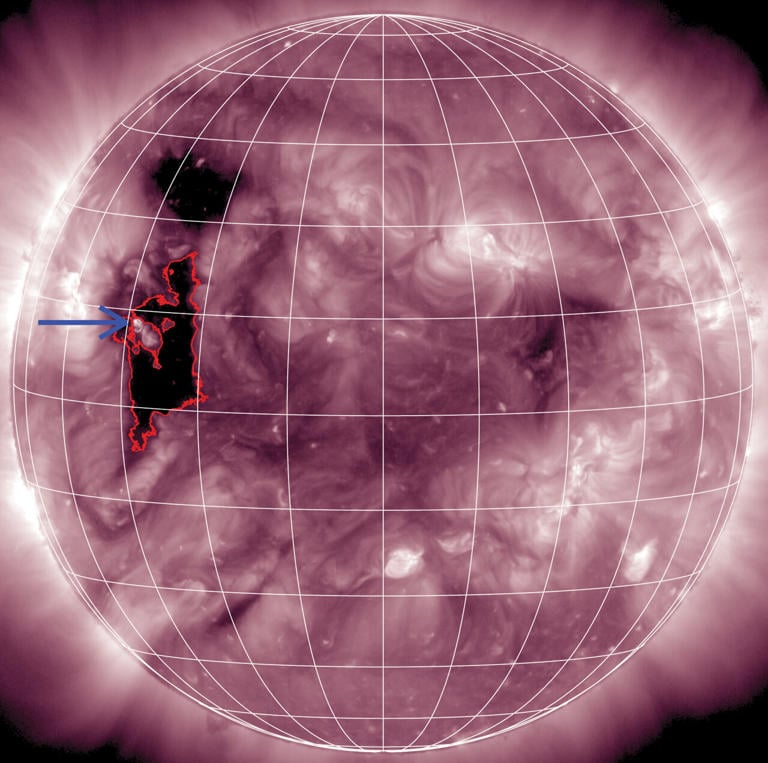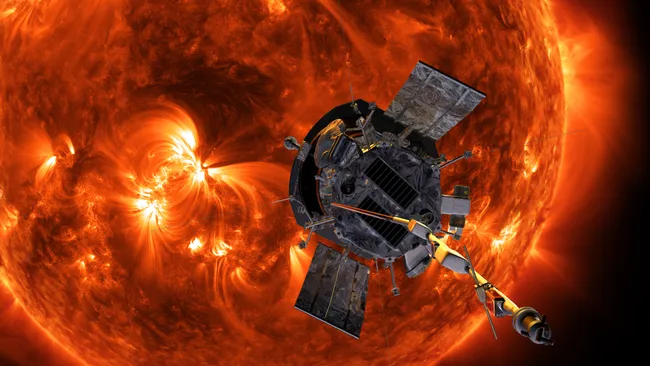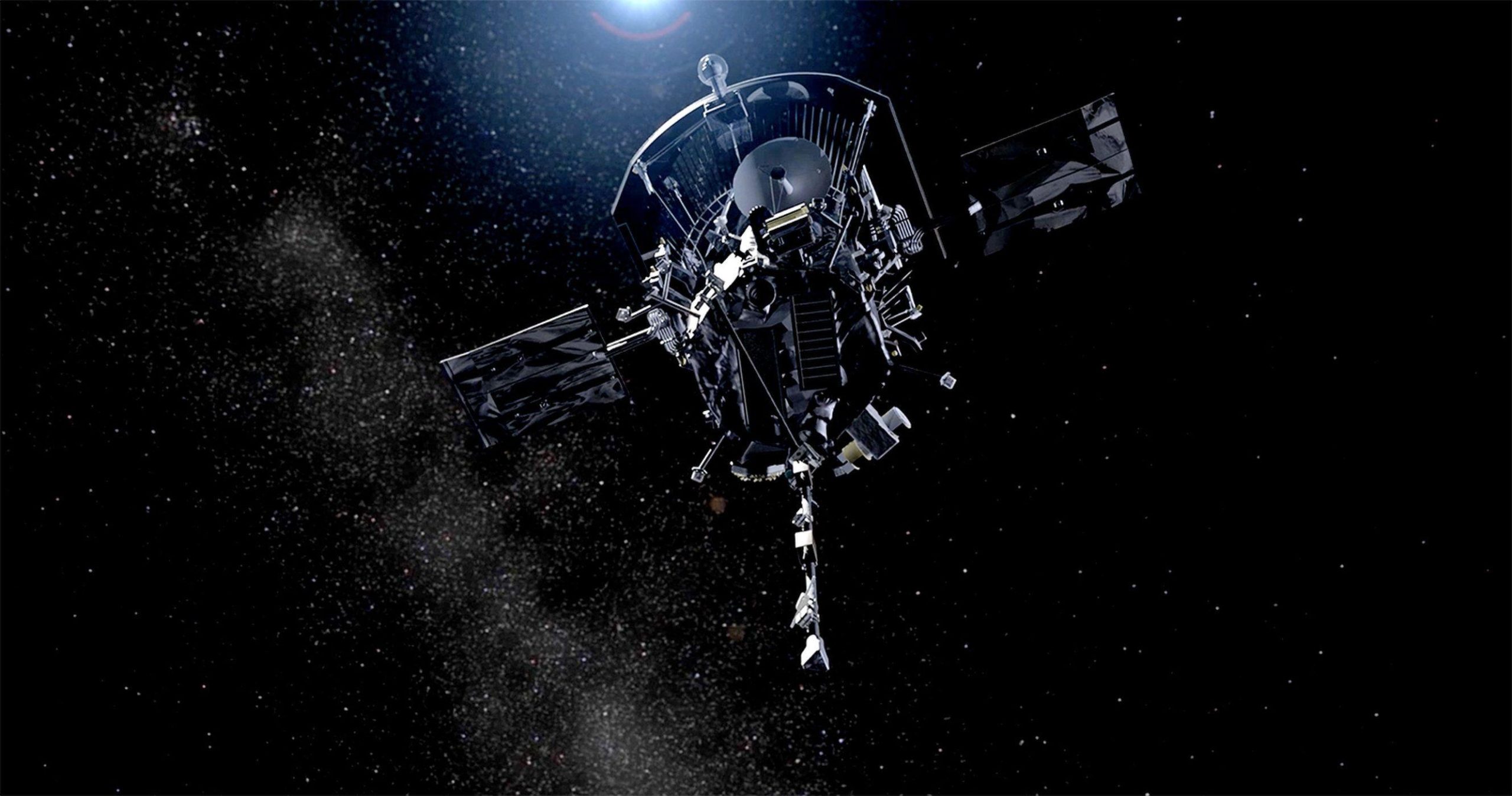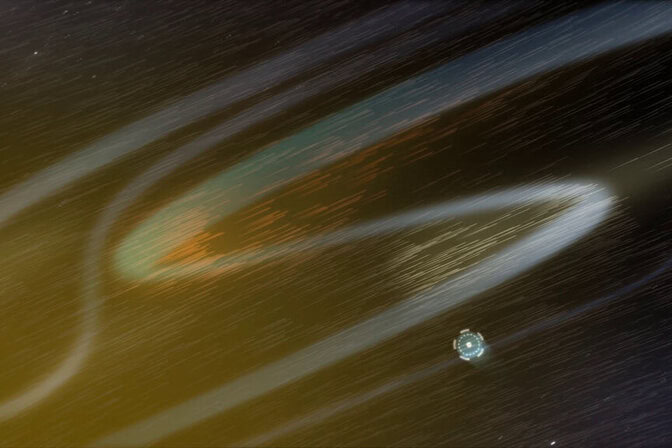Blue Ghost Mission: Photographing a Lunar Sunset for the First Time
Firefly Aerospace’s Blue Ghost mission will mark the first time a lunar sunset has ever been photographed. The mission, set for late 2024, will aim to capture dramatic images as the sun dips below the moon’s horizon, providing invaluable scientific data on lunar regolith and solar wind interactions. The project is part of NASA’s CLPS initiative to encourage private space ventures.
Summary:
- Mission Name: Blue Ghost Mission, part of NASA’s Commercial Lunar Payload Services (CLPS).
- Spacecraft: Blue Ghost lunar lander.
- Launch Vehicle: SpaceX Falcon 9 rocket.
- Objective: Capture the first-ever photograph of a lunar sunset.
- Location: Mons Latreille in Mare Crisium on the moon’s near side.
- Operation Duration: 14 Earth days, with at least 5 hours into the lunar night.
- Scientific Focus: Study of lunar regolith’s reaction to solar wind at dusk.
- Payload: 10 NASA-supported science instruments and technology demonstrations.
- Landing Challenge: Safe landing using terrain navigation tested at Firefly’s Rocket Ranch facility.
- Mission Timeline: Launch in late 2024, reaching the moon in 45 days.
- Final Testing: Currently undergoing environmental testing at NASA’s Jet Propulsion Laboratory.
- Future Missions: Blue Ghost Mission 2 scheduled for 2026, targeting the moon’s far side.
- Historical Context: No previous mission has ever photographed a lunar sunset.
- Launch Location: Cape Canaveral, Florida.
- Project Lead: Firefly Aerospace, with key involvement from NASA and the European Space Agency.
The Significance of a Lunar Sunset
What does a sunset on the moon look like? Abrupt, brief, and dramatic. Unlike Earth, where sunsets paint the sky with vivid colors, the moon’s lack of atmosphere means there’s no soft transition from day to night. As soon as the sun dips below the horizon, temperatures plummet in mere seconds, from blistering hot to freezing cold.
Until now, this phenomenon has been purely theoretical. But with the Blue Ghost Mission by Firefly Aerospace, all of that will change. Scheduled for late 2024, the Blue Ghost spacecraft will attempt to capture the first-ever photograph of a sunset on the moon’s surface.
The moon’s day and night cycle differ significantly from Earth’s. While we experience a 24-hour rotation, the moon takes an entire month to complete one rotation. This means that a single day or night on the moon lasts about two Earth weeks. Consequently, spacecraft designed for lunar exploration are usually solar-powered and tend to land at the onset of the two-week lunar day.
Firefly’s Blue Ghost is designed for a longer operational window. The lander will function for 14 Earth days (the duration of the lunar day) and will continue for at least five hours into the lunar night, long enough to capture images of the sun setting over the horizon.
Blue Ghost will land in Mare Crisium, a massive basin located on the moon’s near side, specifically close to Mons Latreille. This site was selected for its flat terrain and proximity to Mare Tranquillitatis, where Apollo 11 made its historic landing in 1969.
Once operational, Blue Ghost’s onboard camera will aim to photograph the sunset over the lunar landscape, a sight that has never been captured before. This effort will help scientists better understand how lunar regolith, or the moon’s surface material, interacts with solar wind during the transition from day to night.

Table 1: Lunar Day vs. Lunar Night
| Feature |
Lunar Day (14 Earth Days) |
Lunar Night (14 Earth Days) |
| Temperature |
~250°F (121°C) |
~-280°F (-173°C) |
| Sunlight Availability |
Full sunlight |
Complete darkness |
| Mission Operation |
Solar-powered spacecraft active |
Solar-powered spacecraft dormant |
| Blue Ghost Operation |
14 Earth days |
5+ hours into the lunar night |
Final Preparations for Blue Ghost
The mission has entered its final testing phase. After being fully integrated at Firefly Aerospace’s facility near Austin, Texas, Blue Ghost has been shipped to NASA’s Jet Propulsion Laboratory in California for environmental testing. This testing ensures the spacecraft can withstand the extreme conditions it will face on the lunar surface.
Following these tests, the spacecraft will be sent to Cape Canaveral, Florida, where it will be launched atop a SpaceX Falcon 9 rocket during the final quarter of 2024. The mission, appropriately named “Ghost Riders in the Sky,” is one of the most anticipated commercial lunar ventures in recent history.
Once launched, Blue Ghost will take about 45 days to reach the moon. During this time, the spacecraft will undergo health checks, and engineers on Earth will begin gathering scientific data. Once Blue Ghost lands, it will operate for the 14-day lunar day and at least five hours into the lunar night, gathering data on lunar regolith and snapping photos of the lunar sunset.
In preparation for the mission, Firefly constructed a one-acre moonscape at its Rocket Ranch facility. This simulated lunar terrain allowed engineers to test how Blue Ghost could avoid hazards and navigate the lunar surface, ensuring a soft and safe landing on the moon’s rugged terrain.
“After all the hard work, it’s bittersweet to see Blue Ghost leave our Texas-based facility, but we’re more than ready for this final test,” said Jana Spruce, Vice President of Spacecraft at Firefly. “We’ll have a dedicated team of Fireflies with the lander every step of the way as Blue Ghost travels from Texas to California to Florida ahead of this historic journey to the Moon.”
Scientific Payload and Objectives
Blue Ghost can deliver up to 150 kilograms of payload to the lunar surface. On this mission, it will carry 10 NASA-supported science instruments and technology demonstrations. One of the primary objectives of the mission is to study how the lunar regolith reacts to the solar wind during dusk, the period around sunset.
The mission is part of NASA’s Commercial Lunar Payload Services (CLPS) initiative, which aims to foster the development of the private space industry. CLPS contracts are awarded to private companies like Firefly Aerospace to deliver scientific instruments and technology to the lunar surface.

Table 2: Key Milestones for Blue Ghost Mission
| Milestone |
Date/Duration |
| Launch |
Q4 2024 |
| Travel Time to Moon |
45 days |
| Lunar Day Operations |
14 Earth days |
| Lunar Night Operations |
5+ hours |
| Scientific Instruments |
10 NASA-supported instruments |
| Payload Capacity |
150 kilograms |
Blue Ghost’s Future Missions
Firefly Aerospace has big plans for the Blue Ghost lunar lander. The company is already working on its second mission, scheduled for 2026, which will involve landing on the far side of the moon. This mission will include the Blue Ghost lander and an orbital vehicle called Elytra Dark. Elytra Dark will deploy the European Space Agency’s Lunar Pathfinder satellite into lunar orbit.
The mission will also carry NASA’s LuSEE-Night radio telescope. Because the far side of the moon is completely shielded from Earth’s radio frequency noise, it’s an ideal location for studying faint light from the early universe. These observations could provide insights into some of the universe’s oldest cosmic phenomena.
The Blue Ghost Mission is not just another lunar lander mission; it represents a significant milestone in our understanding of the moon. By capturing the first-ever images of a lunar sunset, the mission will provide valuable data on how the moon’s surface interacts with the sun and its solar wind. Additionally, the mission’s success will set the stage for future commercial lunar exploration efforts.
With NASA’s CLPS initiative leading the way, private companies like Firefly Aerospace are pushing the boundaries of what’s possible in space exploration. The moon’s surface will soon become a busy hub of scientific discovery, with Blue Ghost leading the charge.
#BlueGhost, #LunarSunset, #FireflyAerospace, #SpaceExploration, #NASA, #MoonMission, #LunarLanding, #SpaceX, #GhostRidersInTheSky, #LunarRegolith, #SpaceScience, #MoonPhotography, #LunarDayNightCycle, #SpaceTechnology, #PrivateSpaceIndustry










